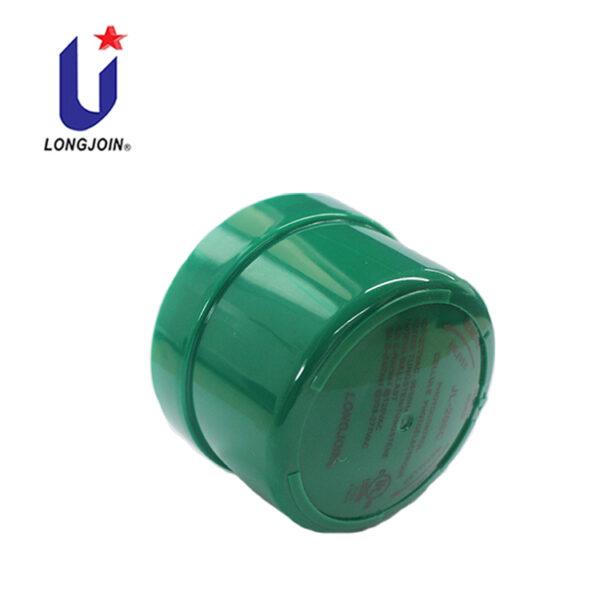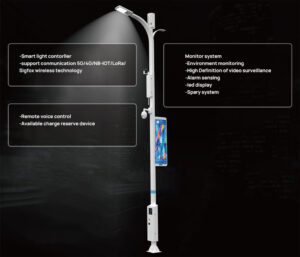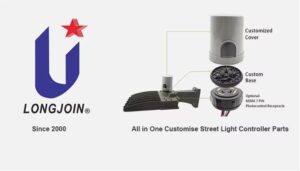Comprehensive Surge Protection for LED Photocell Lighting Sensor: A Must-Have for Urban Infrastructure
Introduce
Urban infrastructure is evolving with every passing day. The adoption of LED photocell lighting systems has emerged as a popular choice. It provides energy efficiency and enhanced visibility in the surroundings. It is an integral part of modern cities. However, electrical issues are a common problem. Due to faults in the power grid, the voltage can increase suddenly. This is an electrical surge. Such electrical surges are a threat to the reliability and functioning of LED photocell lighting systems. It makes surge protection an important component of lighting systems.
LED photocells work on the principle of flight diode technology. They have photocell sensors to provide automated illumination based on ambient light levels.
How Surge Protection Works?
Suge protection works by diverting excess electrical energy away from the sensitive electronic components. It shields the electronic equipment from damage due to electrical spikes. Surge protection devices are installed within the electrical systems, They detect and suppress electrical surges. It reduces the risk of equipment failure and malfunctioning. SPDS functions by providing a low-impedance path to the ground. The excessive energy is dissipated, so the nearby devices remain safe.
Caption: Digital electronic Photocontroller
Impacts of Overvoltage on Lighting Systems
Overvoltages are a common issue. It can either come from external weather conditions or faulty systems in the power grid. But what are the effects of these surges in electricity? Let us find them!
- Component damage: The electrical components of lighting systems can get damaged immediately or gradually due to electrical surges. Common components affected are photocell sensors, drivers, and the control circuit. It will require costly replacements.
- Reduced Lifespan: Excessive voltage stresses components beyond their limits. It will accelerate their degradation. It ultimately shortens the lifespan of the electrical devices.
- Performance degradation: Overvoltages, no matter what the cause, gradually weaken the photocell sensors. It results in erratic behavior and the dimming of LED luminaires. The visibility is compromised in some of these cases.
- Safety Risks: Surge-induced failures of electrical components pose several safety hazards. They may get damaged and produce a fire. If the lighting systems are not working, the risk of crimes is higher because of darkened areas.
Is Surge Protection important?
Surge protection is a vital part of installing lighting systems as it safeguards the electrical systems and their components. It protects your infrastructure from the damaging effects of voltage spikes. Surge protection will enhance the reliability and longevity of LED photocell lighting systems and reduce the risk of sudden equipment failures. It extends their lifespan. Let us look into some amazing benefits of integrating surge protection.
4 Benefits of Integrating Surge Protection
Enhanced Durability
Surge protection guards against the damage effects of electrical surges. It preserves the functionality of LED photocell lighting systems. It confirms long-term durability and reliability by reducing surge-induced damage.
Decrease Maintenance Costs
Failures of electrical components due to electrical surges require costly repairs. The infrastructure cannot be left as it is. Their repair and replacement are required immediately. Using surge protection devices will minimize downtime and maintenance expenses. You will save money over time by the operational lifespan of LED photocell lighting systems.
Improved Operational Efficiency
Reliable operation facilitated by surge protection enhances the functionality of the lighting systems. They work consistently. The disruptions are less and hence the effectiveness remains higher.
Protection of Investment
Anyone who is installing an LED lighting system is spending a huge amount. Electrical surges can damage the whole infrastructure, if not protected by surge protection devices. If this happens, all the amount you spend will go in vain. So, it is vital to use surge protection for lighting systems.
Caption: NEMA waterproof photocell
Best Practices for Surge Protection
Effective integration of surge protection solutions in LED lighting systems requires careful monitoring. You should follow the best practices highlighted below to increase the reliability of your lighting system.
- Assess the Risk: Always conduct a thorough risk assessment of surge vulnerability. Identify the sensitive components of the lighting systems and the vulnerable areas. You should know about the possible sources of surges.
- Selection of SPDs: SPDs come in various forms. Choose the one suitable for the specific requirement of LED photocell lighting systems. Consider factors such as voltage rating, response time, and surge handling capacity to select a good surge protection device. Opt for good-quality SPDs from reputable brands.
- Design Specification: Include the SPDs into the design specifications of LED photocell lighting systems from the outset. The surge protection measures should be integrated naturally into electrical layouts and the control systems
- Additional Protection: Adding one surge protection device is not enough. Use SPDs at various points within the electrical distribution network. Protect both 230V power systems and control circuits to safeguard all components of LED photocell lighting systems.
- Follow Standards: Adhere to the relevant industry standards and regulations set by the governing bodies. Different codes are set for governing surge protection is e;ectrical installations. Surge protection measures should be employed with the applicable standards such as UL 1449, and IEEE standards.
- Regular Maintenance: Don’t forget to regularly check the lighting system. Establish a proactive regimen to inspect, and maintain the surge protection device regularly. Conduct periodic inspections to verify their functionality and condition. Replace the damaged devices and solve all emergencies as soon as possible.
FAQs
Do you need a surge protector for LED lights?
Yes, surge protection is recommended for LED lights to protect them against damage from electrical surges.
How do you protect LED lights from electrical surges?
LED lights can be protected from electrical surges by using surge protection devices. They are installed in the electrical circuit. These devices divert excess voltage away from the lights.
Can you plug LED lights into a surge protector?
Yes, you can plug LED lights into a surge protector to provide additional protection against electrical surges. It’s a recommended practice, especially in areas prone to voltage fluctuations.
What is surge protection in LEDs?
Surge protection in LED refers to the implementation of devices to protect LED lighting systems from electrical surges. These protections help prevent damage to LED lights.
Conclusion
The use of SPDs with LED photocell lighting systems cannot be ignored. It guarantees the reliability, safety, and durability of the lighting infrastructure. You can mitigate the risks posed by electrical surges and protect your equipment. It will reduce the maintenance costs. Follow the best practices for surge protection to guarantee the safety of the electrical infrastructure.






